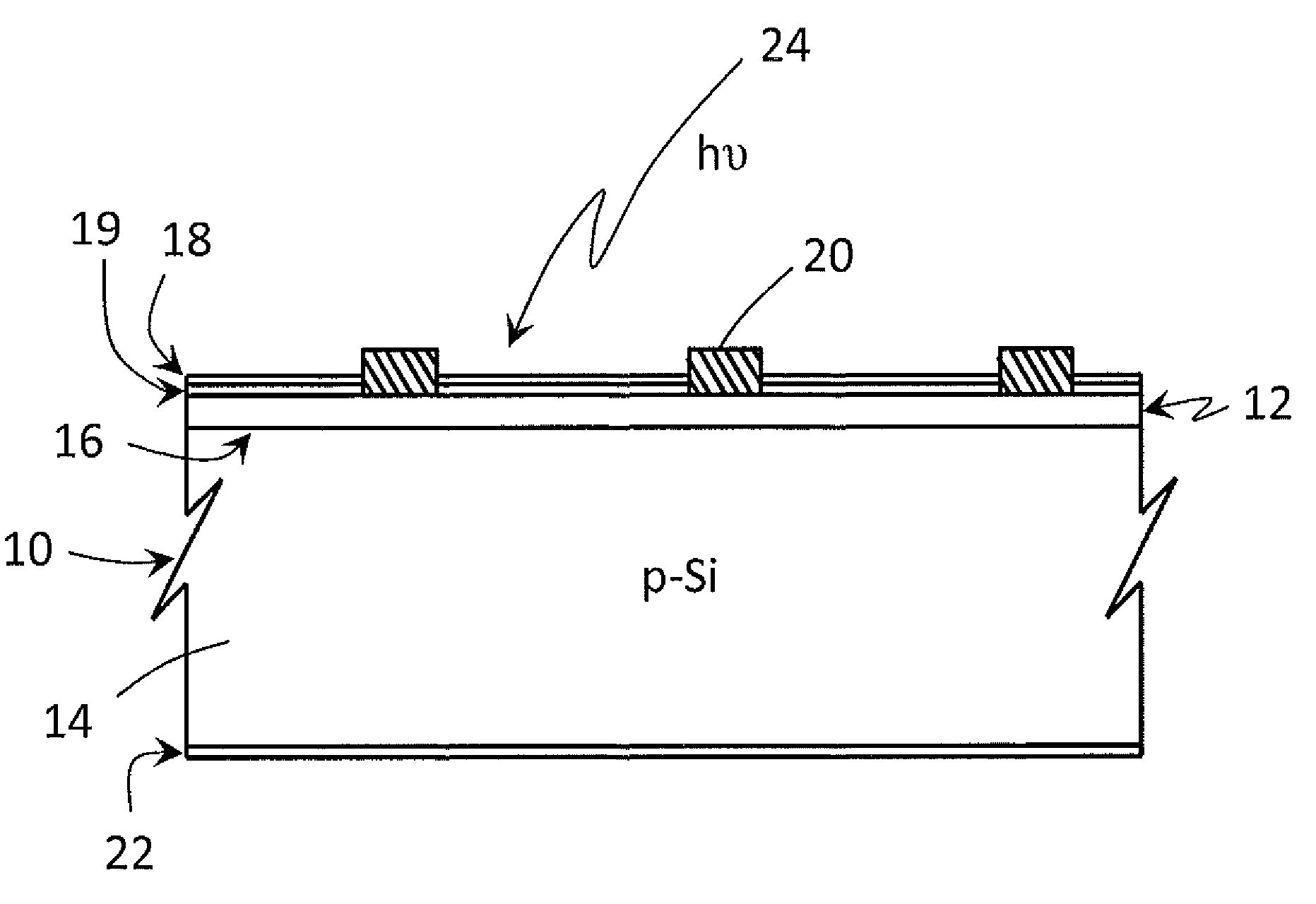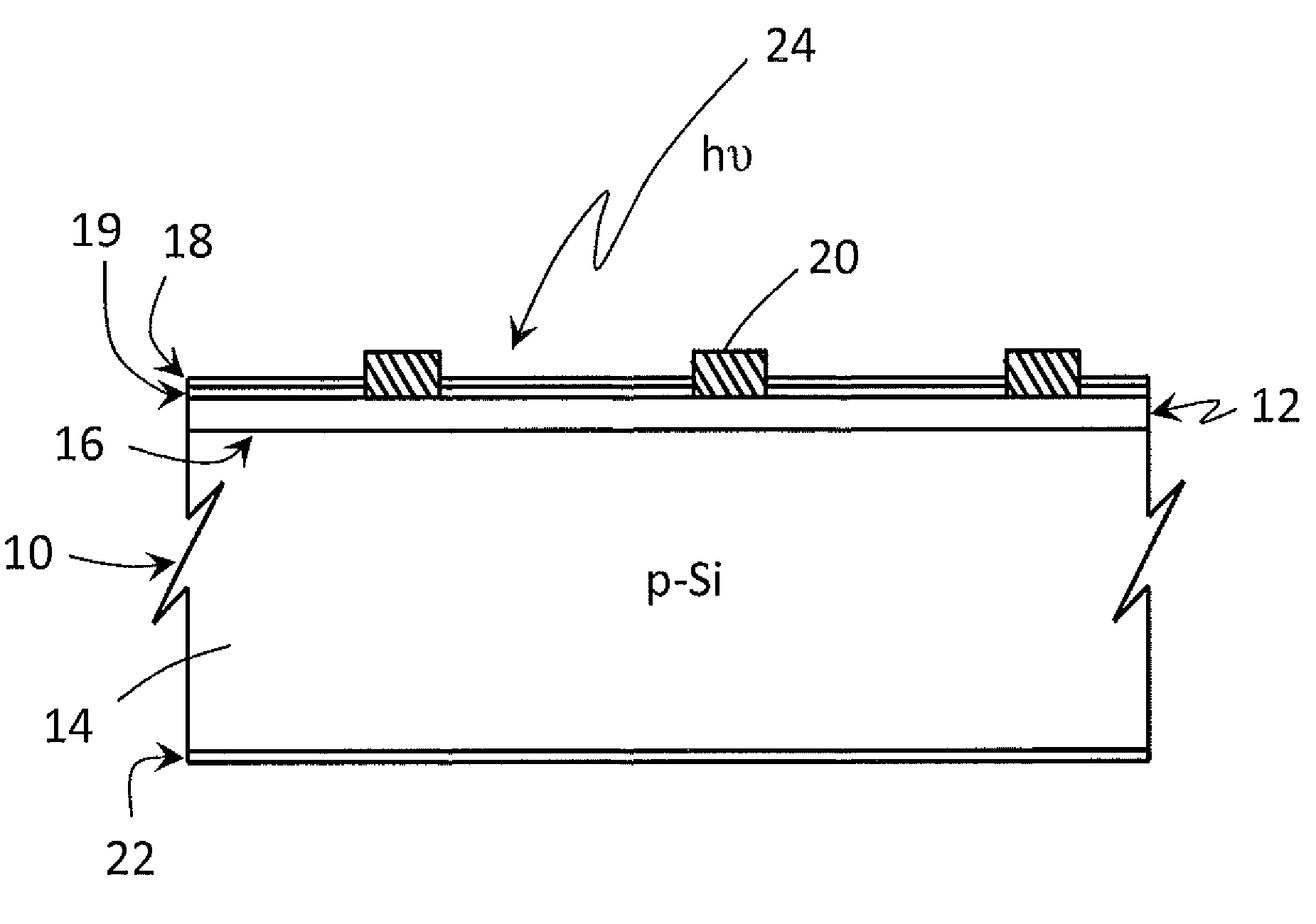Thermal treatment of silicon wafers useful for photovoltaic applications
a technology of photovoltaic applications and silicon wafers, applied in the field of thermal treatment of silicon wafers, can solve the problems of reducing the solubility limit of equilibrium oxygen, super-saturating oxygen incorporated at the interface during growth, and lowering the lifetime of minority carrier silicon, so as to achieve the effect of increasing the lifetime of minority carrier
- Summary
- Abstract
- Description
- Claims
- Application Information
AI Technical Summary
Benefits of technology
Problems solved by technology
Method used
Image
Examples
Embodiment Construction
[0018]The need for highly efficient solar cells imposes somewhat different requirements on silicon wafers used for PV applications than for wafers used for integrated circuits. One of the prime requirements for wafers for PV applications is a high minority carrier lifetime (mcl) since the product of the square root of the met multiplied by the diffusion coefficient of the minority carrier determines the distance over which the photo-generated minority carriers in PV cells can effectively diffuse before recombining with majority carriers. The greater this diffusion distance, the higher the probability that the minority carrier will reach the p-n junction (referred to as the solar cell emitter) without recombining with the abundant majority carriers in the silicon. Long lifetime is necessary but not sufficient. Several other requirements need be satisfied for single crystal silicon wafers to be useful in PV applications, such as proper resistivity, low carbon concentration, large diam...
PUM
| Property | Measurement | Unit |
|---|---|---|
| temperature | aaaaa | aaaaa |
| temperatures | aaaaa | aaaaa |
| partial pressure | aaaaa | aaaaa |
Abstract
Description
Claims
Application Information
 Login to View More
Login to View More - Generate Ideas
- Intellectual Property
- Life Sciences
- Materials
- Tech Scout
- Unparalleled Data Quality
- Higher Quality Content
- 60% Fewer Hallucinations
Browse by: Latest US Patents, China's latest patents, Technical Efficacy Thesaurus, Application Domain, Technology Topic, Popular Technical Reports.
© 2025 PatSnap. All rights reserved.Legal|Privacy policy|Modern Slavery Act Transparency Statement|Sitemap|About US| Contact US: help@patsnap.com


